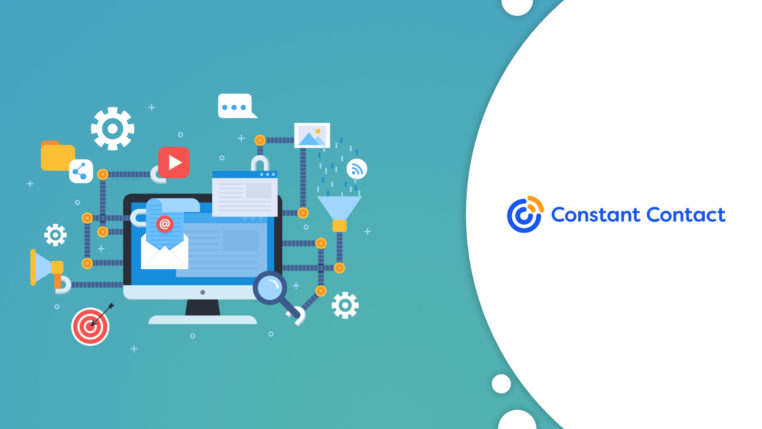10 B2B Email Marketing Mistakes to Avoid in 2022

Table of Contents
With an average ROI of $42 for every dollar spent and four billion global users worldwide, email stays within the top three distribution channels for both B2B and B2C marketers.
And while social media platforms remain the #1 organic content distribution channel for user engagement, emails are 40x more effective for customer acquisition. That makes an email the essential component of marketing strategies for most business organizations, despite the growth of chat apps and mobile messengers.
The only problem:
Given such popularity and efficiency, competition is super high. Email marketers try hard to follow trends and experiment with email content, often getting trapped with the most obvious mistakes.
Here you'll find the top 10 email marketing mistakes to avoid when planning and organizing your B2B campaigns. Seemingly evident, they are easy to overlook, thereby burying your chances for better open rates, customer engagement, and higher conversion.
1. Sending unexpected emails
A sure-fire way to frustrate customers and make them click your "Unsubscribe" link or button is to send them occasional emails.
Some marketers practice it, emailing only when a new product launch comes. For people subscribing to newsletters and planning to get informative or educational content from you, such emails come like a bolt from the blue:
Users are likely to forget about it when they see nothing in their inboxes for some time after subscription. So they start boiling over when a sudden email comes, clicking "Spam" or unsubscribing, which is not that good for that newsletter statistics.
So, please don't turn your email marketing campaigns into a "we-only-send-when-have-something" stuff, like most people do when emailing a teacher or a friend. Start working with your mailing list even if you have only a few contacts in it.
Send at least one or two emails per month. When pauses happen, remind subscribers about you by sending them something pleasant and sweet. Emails like "We missed you," "Here's what you've missed," or "Do you still want to hear from us?" are great examples to try for customer re-engagement.
2. Wrong personalization
Marketers know the power of personalization in email, calling a customer by name, to say the least, when sending messages. But today, users are smart enough to understand that personalization in emails is all about proper tags a marketer places into an automation tool. That is why calling subscribers by names in emails may not have the same positive effect as before.
And yet, it's not that favorable for your brand reputation if subscribers get newsletters like this one:
It's a mistake to forget to check tags or names website visitors use when subscribing to your newsletters. Typos happen, or they can write nonsense on purpose, something like "Don't write me!" or "hdregs" to catch you out.
Using such names in the hope of customer loyalty, you can get a polar opposite result. To avoid that, please check all fields twice before sending an email. Also, you might want to do A/B testing of your email marketing campaign to see if personalization by name influences conversion.
Besides mistakes in the receiver's name, please make sure to avoid:
- Spelling and grammar mistakes in the email's body
- Broken links
- Errors in fields like Sender Name and Reply-to Email Address
3. No segmentation
Segmentation is a must in email marketing. It influences open rates (15% higher on average), clicks, and conversions. And given that the ultimate goal of digital marketing is to generate revenue, it's no surprise to see emails a part of the sales funnel:
There were case studies when customer segmentation helped retailers increase revenue by 140% and more. Plus, you can get an improved unsubscribe rate by sending relevant emails to different customer groups.
So, segment your email list based on subscribers' data such as age, gender, interests, location, and more. Their purchasing habits, level of engagement, and device they use to open and read your emails are also good segmentation strategies to consider.
If you don't have any information except their emails, consider a behavioral segmentation with the help of RFM analysis.
Once ready, work with each segment of your audience separately. You may want to send emails asking for feedback to loyal customers, special offers to "promising" ones, and so on. The more relevant your email content will be to each segment, the better.
4. Subject lines and body content mismatch
You know that email subject lines matter: They engage and motivate users to open an email for further information. The problem is that some marketers misunderstand the role of subject lines, using them as clickbait in chase of high open rates.
What happens?
Yes, a user opens an email but doesn't see any related content in the email's body. They consider you a manipulator, mark your emails as spam, and unsubscribe from you. Plus, your brand reputation will suffer: Users won't trust it anymore.
It's okay to encourage subscribers to open your marketing emails. Personalization, trigger words, questions, and smileys are among writing tricks specialists use in email subject lines to hook recipients, fuel their curiosity, and encourage them to click.
But please, do your best to avoid subject lines and body content mismatch: Write compelling subject lines that will be relevant to the email content you share.
5. No preheaders
Some email marketers don't pay attention to the text appearing just after a subject line. We know it as an email preheader or a preview text, aka a short snippet of text going right after the subject line. And it's another chance to grab attention and motivate a subscriber to click.
That’s what it looks like in a recipient’s inbox:

A preheader can offer a call to action, summarize your message, or hook users with a value they'll get after opening your email. Given that subscribers see it even before they click, why not consider it as an extra instrument to influence your conversion?
Minor HTML manipulations in your email automation tool will add a hidden preheader for subscribers to see when getting messages from you. Think of it as a meta description of your email for users to understand what they’ll find inside.
6. No opportunity for feedback
Among the most common email marketing mistakes is sending emails with "do not reply" messages. As a rule, such emails come from "no-reply" or "admin" addresses or from those no one ever checks.
If you're still doing so, please stop. No user wants to have dealings with a brand that doesn't give them an opportunity for feedback. It's a signal you don't want to hear from customers, which is not that great when building brand loyalty and reputation.
Besides, it hurts your delivery and conversion rates, leading to increased spam rates and cut off communication.

Send your newsletters from an email address that lets users write back. If you have no resources to manage their feedback, try sharing other communication channels in emails, using electronic signatures with alternative contacts, or adding a reply button to guide users to a dedicated landing page dealing with queries.
Give people an opportunity to talk to your brand and get answers to their questions. Thus you'll enhance the chance to make them your clients.
7. Working with outdated email lists
With all the requirements providers set to the email list quality, including the limits on acceptable returns and complaints, it's critical to keep it relevant and updated. Otherwise, dozens of long-abandoned mailboxes appear there over time, hurting your deliverability.
As a result, you'll get an increased spam rate, exceed the provider's limits, and your newsletters will get blocked.
To deal with that, get the most out of automation:
Try using email validation services to analyze your email list and delete suspicious and non-working email addresses from it.
Another trick is to grow your email list gradually and clean it regularly. It will allow you to avoid the suspicious jump of activity all email providers don't like.
8. Adding too many calls to action
The perennial question of most email marketers:
How many CTAs in an email should we use? Is it okay to use a few, and how many email CTAs are too many for one message?
Look:
It's okay only to use a few CTAs in your email if they all lead to one page and action. Like this one:
It has three CTAs, all about downloading a free copy. And yet, they have different percentages of clicks: 51% comes to a text-based CTA of a contrasting color at the bottom of the email. It makes us suggest that the best option would be to follow the "one email = one CTA" rule here.
And here comes another common email marketing mistake:
Some specialists continue overwhelming their newsletters with several CTAs of different goals: visit a website, leave feedback, order, subscribe, etc. It makes users get lost and misunderstand what they should do next. Plus, it becomes challenging to measure such campaigns as marketers have to analyze several metrics with different data.
Remember:
The more options you give, the more likely you'll lose customer attention. Make them understand what exactly you want them to do, and follow the best practices of email CTAs design for that:
- CTA buttons perform better than links because they are more visually appealing and inviting to click. With the help of HTML, you can make it stand out: Use a more extensive
text than in the email body (but don’t make it too massive) and make it touch-friendly for mobile users.
- Place it right. The upper-left corner is the best option for emails that users read on mobiles. The right-hand side of the email text is perfect for taking advantage of the natural direction of reading flow. And, CTAs placed "above the fold" is your chance to hook readers who don't scroll to the bottom of your email.
9. Misleading subscribers
This email marketing mistake relates to the email subject line and content mismatch problem but can lead to even worse results.
It's when your subscription form promises one thing — a discount code, educational content, a free e-book, you name it! — but you break the word and send other stuff instead. Or, you promise to email once a month but send sales messages every week instead.
It leads to a negative response and hurts your marketing campaign by far.
To prevent this, be honest with your subscribers and keep your word. Remember about surplus value: Promise less, give more. It's a sure-fire way to build customer trust and turn them into your brand's advocates.
10. No system in sending newsletters
A big mistake would be to email subscribers whenever you want or have time to craft exciting content with video editors, infographic makers, or text-editing apps. When it comes to their inboxes, people love order and a kind of predictability; and that is why they choose the frequency of emails they want to get from you.
By the way, giving them no chance to do that is one more email marketing mistake to mention in this list.
So, do your best to systematize your newsletter. Make a sending plan for a few months ahead and decide on days and times for sending your emails to subscribers.
While Tuesdays and Thursdays' middles of the day are the two most popular days to send emails, the ideal variant would be to test a few options. Analyze your audience's activity and build your email marketing strategy based on that.
In a word
Despite the rise of chatbots and instant messengers, many people prefer getting brand news and offers via email in 2021. Email marketing remains super effective for customer acquisition, and that's why many brands consider it an essential part of their sales funnel.
Nobody's perfect, and even the most experienced marketers aren't immune from mistakes. This article's ten most common email marketing mistakes are here to freshen your memory of the fundamentals, which are so easy to miss or forget when chasing trends and struggling for customer attention, don't you agree?
Share this article







